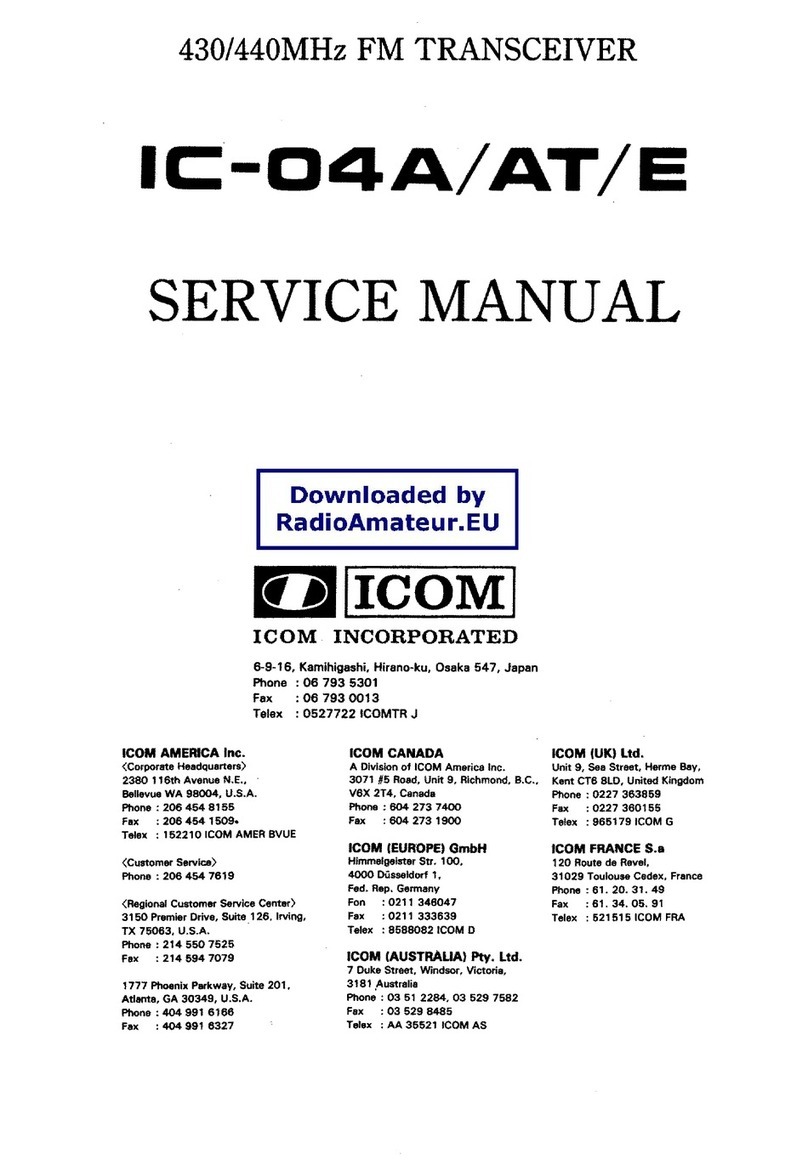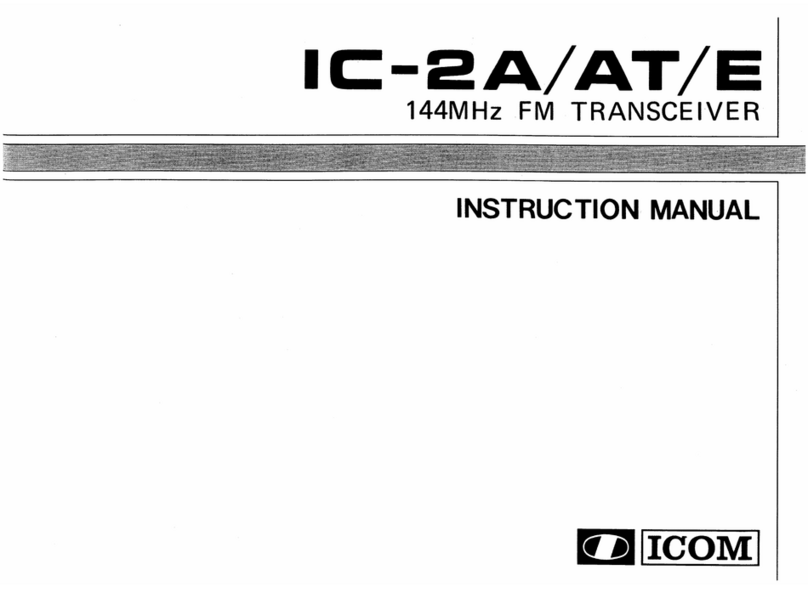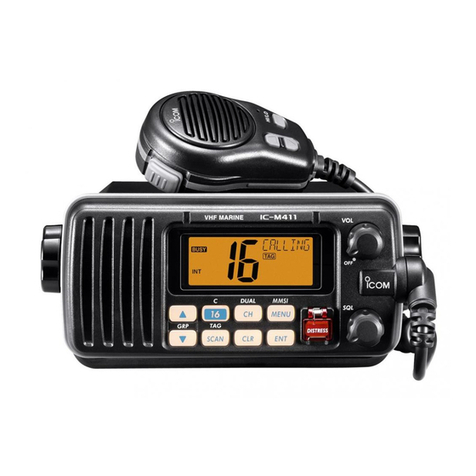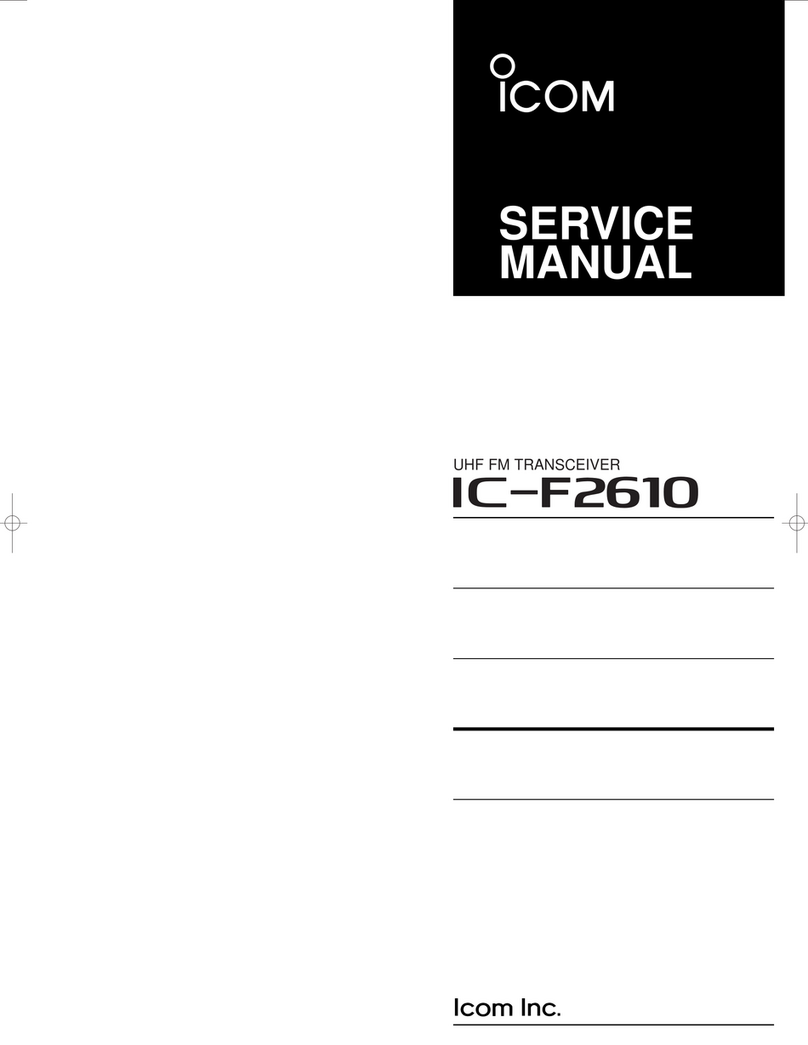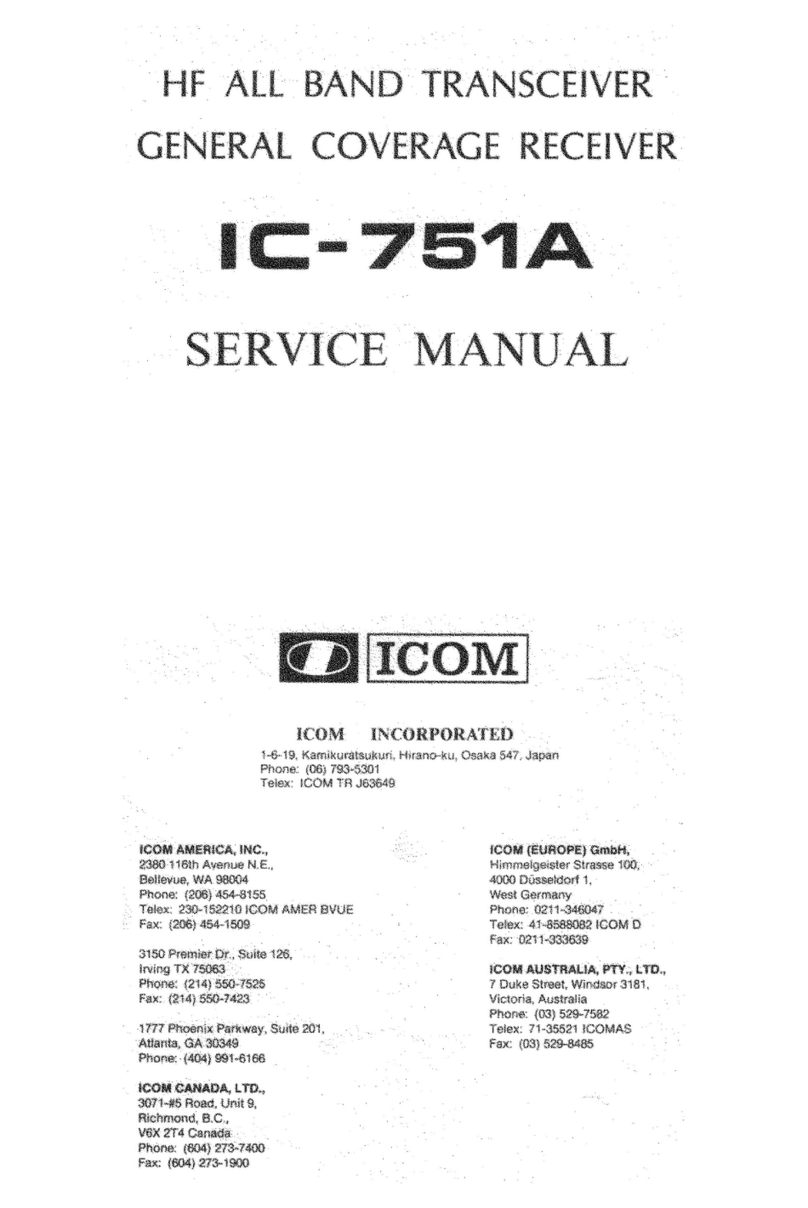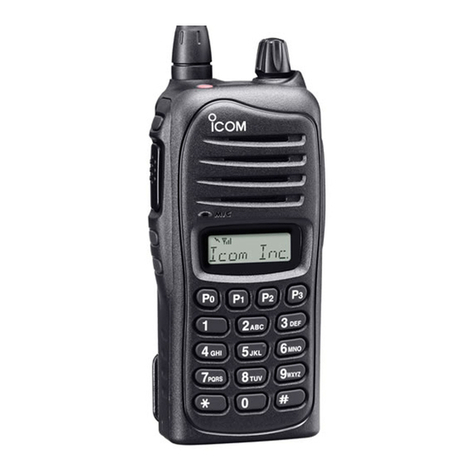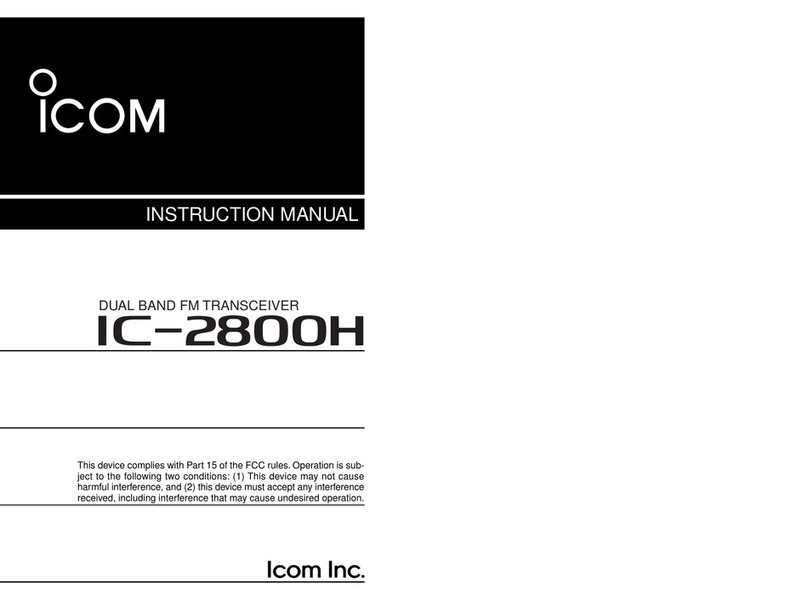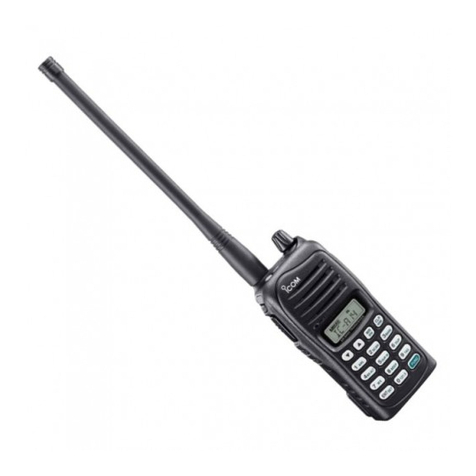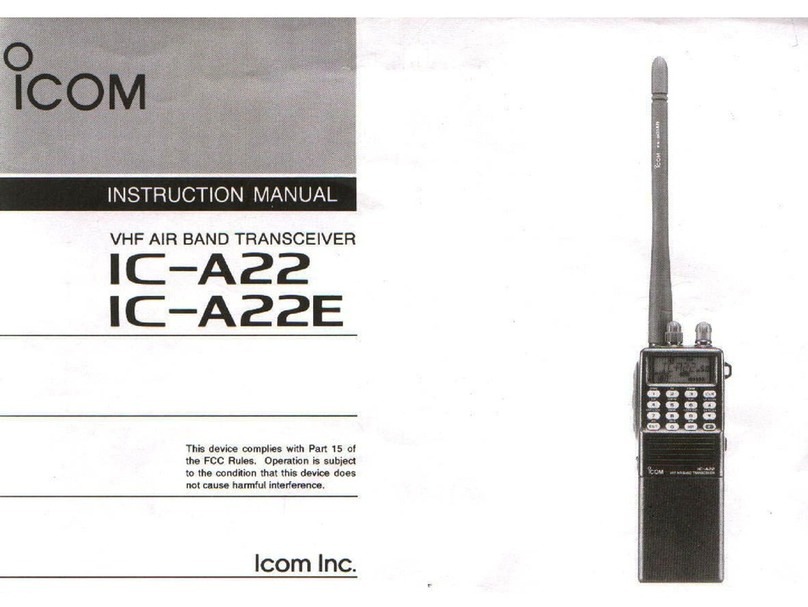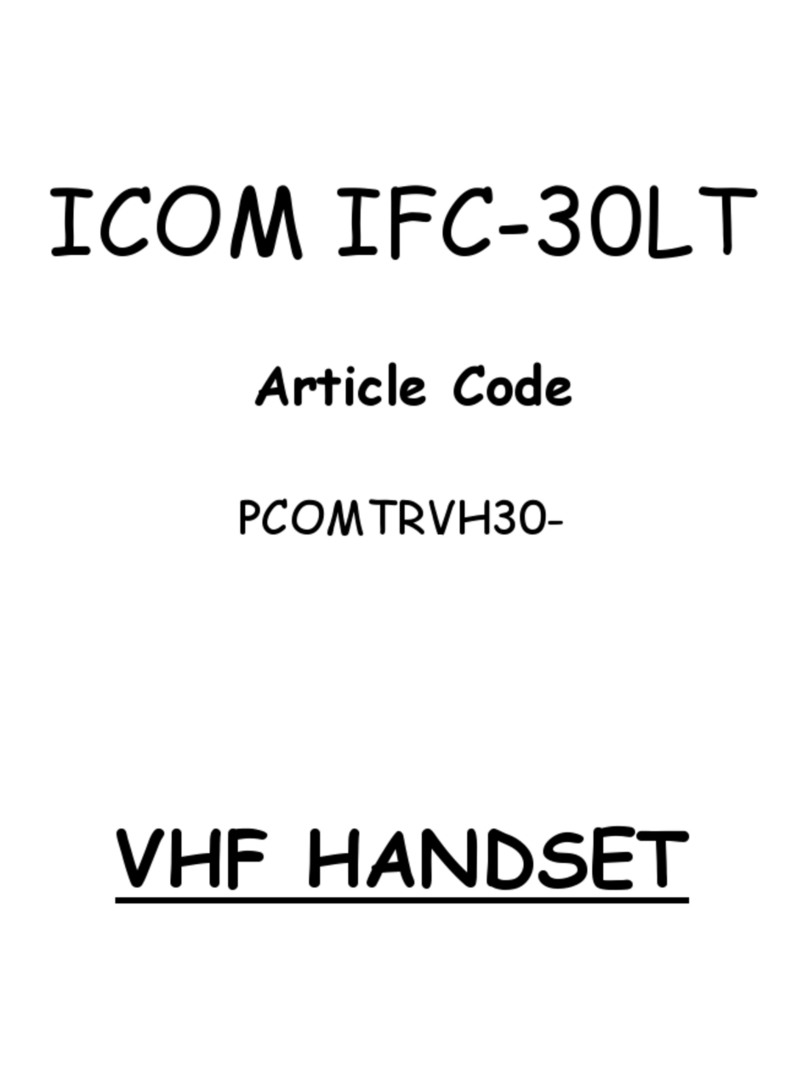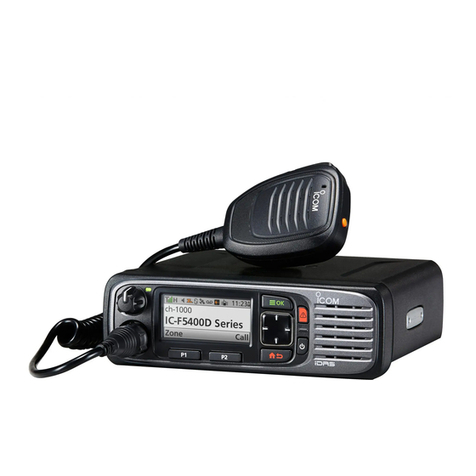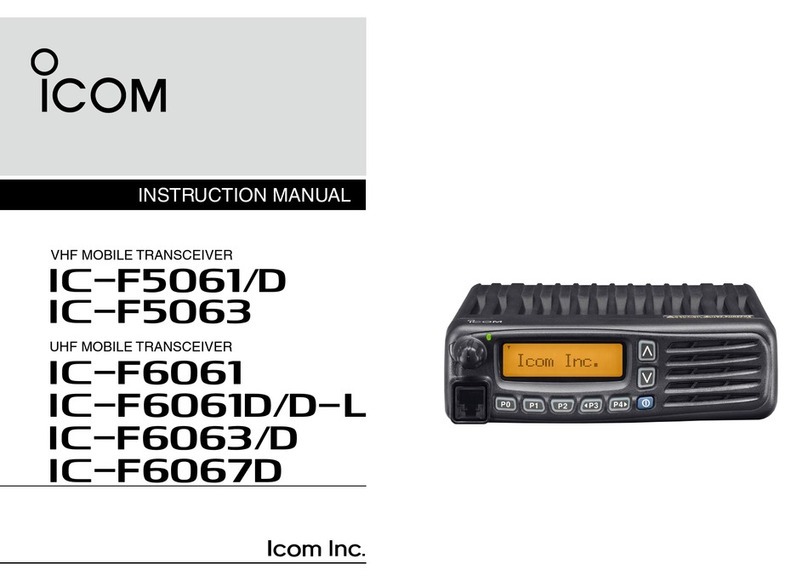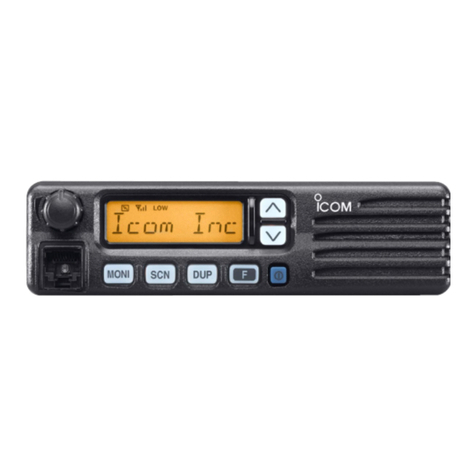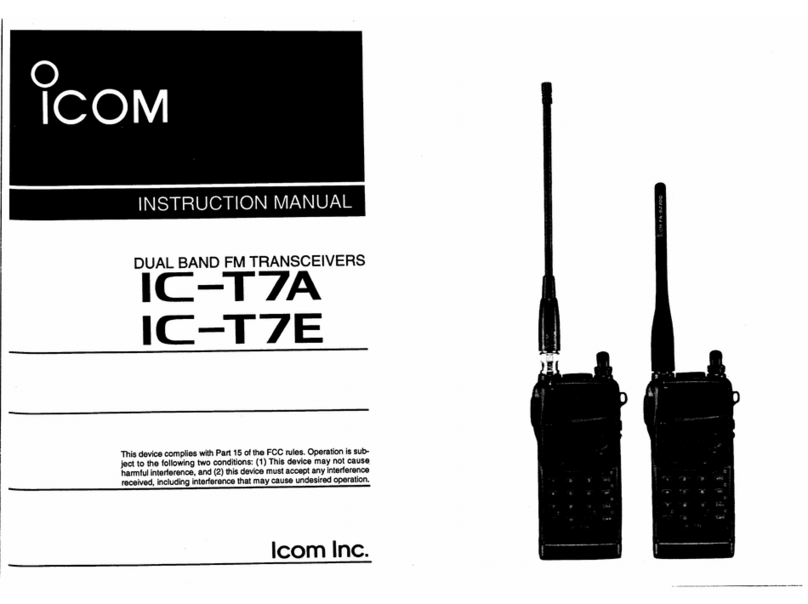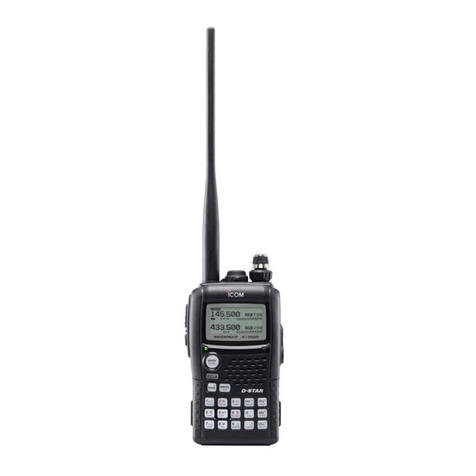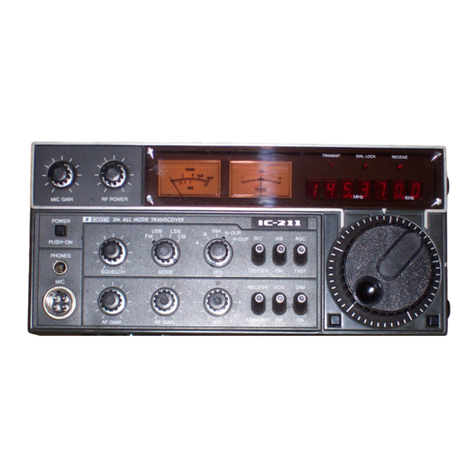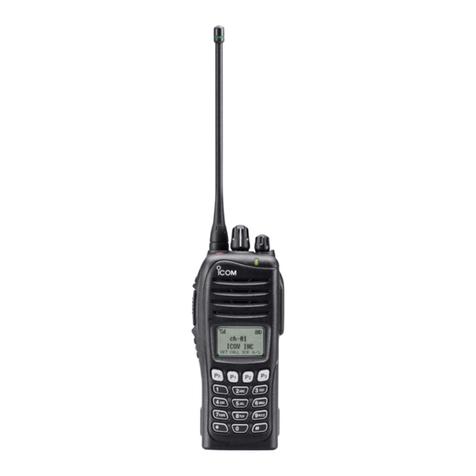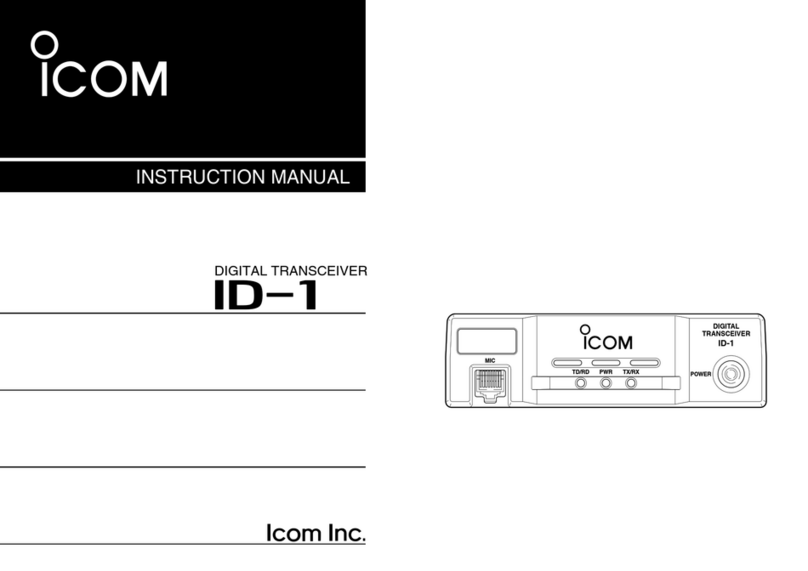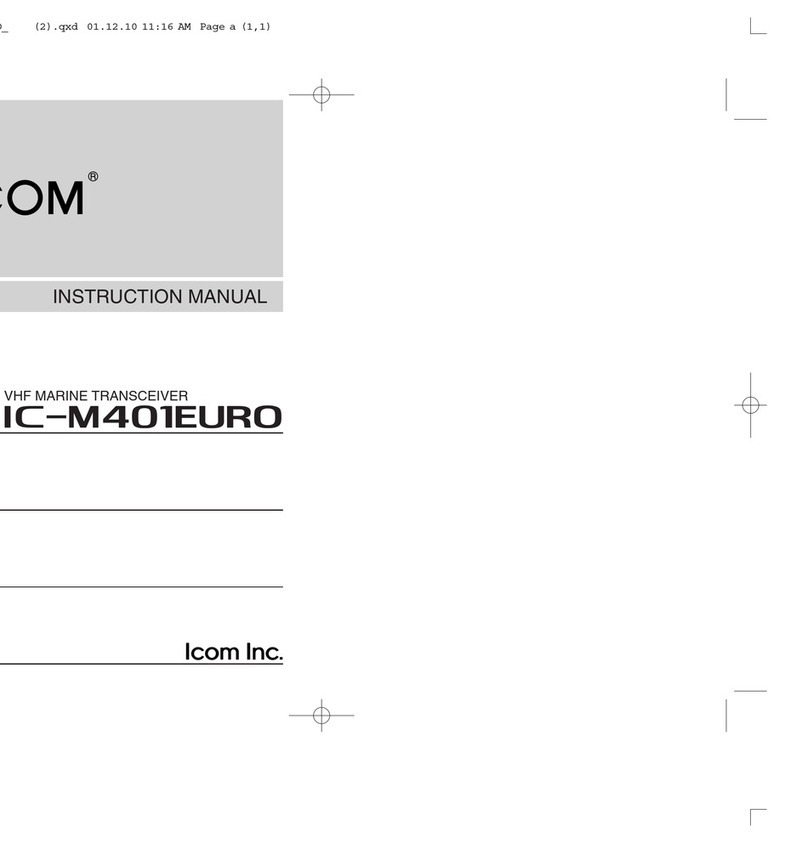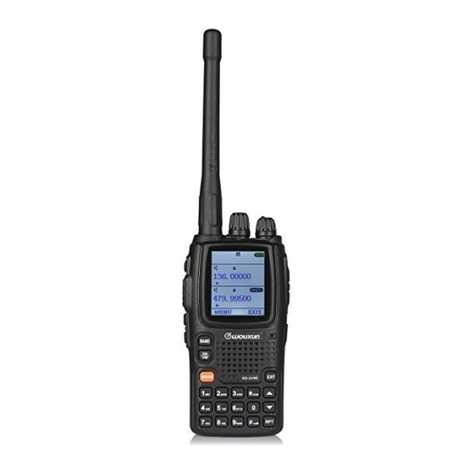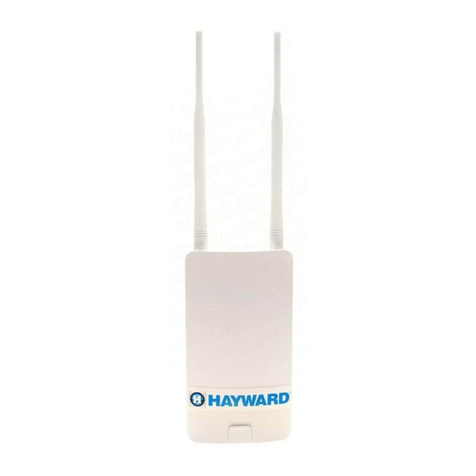Icom IC-2820H User manual

INSTRUCTION MANUAL
i2820H
DUAL BAND FM TRANSCEIVER
This device complies with Part 15 of the FCC rules. Operation is sub-
ject to the following two conditions: (1) This device may not cause
harmful interference, and (2) this device must accept any interference
received, including interference that may cause undesired operation.

i
FOREWORD
Thank you for purchasing this Icom product. The IC-2820H
VHF
/
UHF FM TRANSCEIVER
is designed and built with Icom’s su-
perior technology and craftsmanship. With proper care, this
product should provide you with years of trouble-free opera-
tion.
We want to take a couple of moments of your time to thank
you for making your IC-2820H your radio of choice, and hope
you agree with Icom’s philosophy of “technology first.” Many
hours of research and development went into the design of
your IC-2820H.
DD
FEATURES
❍Diversity reception is ready
❍DV (Digital Voice) with GPS operation
capabilities (Optional UT-123 is required)
❍V/V, U/U simultaneous receive capability
❍Independent controls for each left and right
bands
❍Separate controller for flexible installation
❍Remote control microphone standard
IMPORTANT
READ ALL INSTRUCTIONS carefully and completely
before using the transceiver.
SAVE THIS INSTRUCTION MANUAL— This in-
struction manual contains important operating instructions for
the IC-2820H.
EXPLICIT DEFINITIONS
WORD DEFINITION
RWARNING!
CAUTION
NOTE
Personal injury, fire hazard or electric shock
may occur.
Equipment damage may occur.
Recommended for optimum use. No risk of
personal injury, fire or electric shock.
Icom, Icom Inc. and the logo are registered trademarks of Icom
Incorporated (Japan) in the United States, the United Kingdom, Ger-
many, France, Spain, Russia and/or other countries.

RWARNING RF EXPOSURE! This device emits Radio
Frequency (RF) energy. Extreme caution should be observed when
operating this device. If you have any questions regarding RF expo-
sure and safety standards please refer to the Federal Communica-
tions Commission Office of Engineering and Technology’s report on
Evaluating Compliance with FCC Guidelines for Human Radio fre-
quency Electromagnetic Fields (OET Bulletin 65).
RWARNING! NEVER connect the transceiver to an AC out-
let. This may pose a fire hazard or result in an electric shock.
RWARNING! NEVER operate the transceiver while driving a
vehicle. Safe driving requires your full attention—anything less may
result in an accident.
NEVER connect the transceiver to a power source of more than
16 V DC. This will damage the transceiver.
NEVER connect the transceiver to a power source using reverse
polarity. This will damage the transceiver.
NEVER cut the DC power cable between the DC plug and fuse
holder. If an incorrect connection is made after cutting, the transceiver
may be damaged.
NEVER expose the transceiver to rain, snow or any liquids. The
transceiver may be damaged.
NEVER operate or touch the transceiver with wet hands. This may
result in an electric shock or damage the transceiver.
NEVER place the transceiver where normal operation of the vehi-
cle may be hindered or where it could cause bodily injury.
NEVER let objects impede the operation of the cooling fan on the
rear panel.
DO NOT push the PTT when not actually desiring to transmit.
DO NOT allow children to play with any radio equipment contain-
ing a transmitter.
During mobile operation, DO NOT operate the transceiver with-
out running the vehicle’s engine. When the transceiver’s power is ON
and your vehicle’s engine is OFF, the vehicle’s battery will soon be-
come exhausted.
AVOID using or placing the transceiver in direct sunlight or in
areas with temperatures below –10°C or above +60°C.
BE CAREFUL! The transceiver will become hot when operat-
ing it continuously for long periods.
AVOID setting the transceiver in a place without adequate venti-
lation. Heat dissipation may be affected, and the transceiver may be
damaged.
AVOID the use of chemical agents such as benzine or alcohol
when cleaning, as they can damage the transceiver’s surfaces.
USE Icom microphones only (supplied or optional). Other manu-
facturer’s microphones have different pin assignments and may dam-
age the transceiver if attached.
For U.S.A. only
CAUTION: Changes or modifications to this device, not ex-
pressly approved by Icom Inc., could void your authority to
operate this device under FCC regulations.
ii
PRECAUTIONS

iii
TABLE OF CONTENTSSUPPLIED ACCESSORIES
qDC power cable (3 m) ………………………………………1
wController cable (10 cm†; 3.9 in†) …………………………1
eSeparation cable (3.4 m†; 11.2 ft†) …………………………1
rMicrophone (HM-133)* ……………………………………1
tFuse (20 A) …………………………………………………1
yMicrophone hanger …………………………………………1
uMounting screws, nuts and washers …………………1 set
iMobile mounting bracket …………………………………1
oMicrophone connector plate with screw ……………1 set
!0Remote controller bracket …………………………………1
*HM-154
HAND MICROPHONE
may be supplied with some versions.
†Approx.
qw
e
t
r
i
u
!0o
y
FOREWORD ........................................................................................... i
IMPORTANT ............................................................................................ i
EXPLICIT DEFINITIONS ......................................................................... i
PRECAUTIONS ...................................................................................... ii
SUPPLIED ACCESSORIES .................................................................. iii
TABLE OF CONTENTS ......................................................................... iii
QUICK REFERENCE GUIDE ........................................................... I–XII
■Installation ....................................................................................... I
■Your first contact ......................................................................... VIII
■Repeater operation ........................................................................ X
■Programming memory channels.................................................... XI
1 PANEL DESCRIPTION ............................................................... 1–10
■Front panel— controller ................................................................. 1
■Function display ............................................................................. 3
■Main unit ........................................................................................ 5
■Microphone (HM-133) .................................................................... 7
■Microphone keypad ........................................................................ 8
■Optional microphones (HM-118N/TN/TAN)................................... 10
2 SETTING A FREQUENCY ........................................................ 11–15
■Preparation ................................................................................... 11
■Using the tuning dial .................................................................... 13
■Using the [Y]/[Z] keys ................................................................. 13
■Using the keypad ......................................................................... 13
■Tuning step selection ................................................................... 14
■Lock functions .............................................................................. 15
3 BASIC OPERATION ................................................................. 16–21
■Receiving ..................................................................................... 16
■Monitor function ........................................................................... 16
■Squelch attenuator ....................................................................... 17
■V/V, U/U simultaneous receive (Para-watch) ............................... 18
■Sub band mute/sub band busy beep ........................................... 19
■Transmitting ................................................................................. 20

1
2
3
4
5
6
7
8
9
10
11
12
13
14
15
16
17
18
19
iv
■Selecting output power ................................................................ 20
■One-touch PTT function ............................................................... 21
■Audio mute function ..................................................................... 21
4 REPEATER OPERATION ......................................................... 22–28
■General ........................................................................................ 22
■Accessing a repeater ................................................................... 23
■Subaudible tones ......................................................................... 25
■Offset frequency .......................................................................... 27
■Auto repeater (USA version only) ................................................ 28
5 MEMORY OPERATION ............................................................ 29–37
■General description ...................................................................... 29
■Memory channel selection ........................................................... 29
■Programming a memory channel ................................................. 30
■Transferring memory contents ..................................................... 32
■Memory clearing .......................................................................... 34
■Memory bank selection ................................................................ 35
■Memory bank setting .................................................................... 36
■Transferring bank contents .......................................................... 37
6 CALL CHANNEL OPERATION ................................................ 38–39
■Call channel selection .................................................................. 38
■Call channel transferring .............................................................. 38
■Programming a call channel ........................................................ 39
7 SCAN OPERATION .................................................................. 40–45
■Scan types ................................................................................... 40
■Scan start/stop ............................................................................. 41
■Scan edges programming ............................................................ 42
■Skip channel setting ..................................................................... 44
■Scan resume condition ................................................................ 45
8 PRIORITY WATCH .................................................................... 46–47
■Priority watch types ...................................................................... 46
■Priority watch operation ............................................................... 47
9 DTMF MEMORY ENCODER ..................................................... 48–51
■Programming a DTMF code ......................................................... 48
■Transmitting a DTMF code .......................................................... 50
■DTMF speed ................................................................................ 51
10 POCKET BEEP AND TONE SQUELCH ................................... 52–55
■Pocket beep operation ................................................................. 52
■Tone/DTCS squelch operation ..................................................... 54
■Tone scan ..................................................................................... 55
11 OTHER FUNCTIONS ................................................................ 56–72
■Set mode ...................................................................................... 56
■Initial set mode ............................................................................. 60
■AM/FM narrow mode ................................................................... 64
■Weather channel operation (USA version only) ........................... 65
■Microphone keys .......................................................................... 66
■Partial reset .................................................................................. 67
■All reset ........................................................................................ 67
■Data cloning ................................................................................. 68
■Packet operation .......................................................................... 69
12 MAINTENANCE ........................................................................ 73–74
■Troubleshooting ........................................................................... 73
■Fuse replacement ........................................................................ 74
13 SPECIFICATIONS AND OPTIONS ........................................... 75–76
■Specifications ............................................................................... 75
■Options ......................................................................................... 76
14 MODE ARRANGEMENT ........................................................... 77–78

I
QUICK REFERENCE GUIDE
■Installation
DPrecaution— magnets
RCAUTION
Magnets are used for the controller’s attachment to the main
unit.
NEVER hold the whole unit by the controller only when carry-
ing the transceiver. Carry the transceiver holding the main
unit. If held by the controller, the main unit may drop off and
may result in injury to the person carrying it or damage the
transceiver.
NEVER attach the controller on the main unit’s top cover, par-
ticularlly around the internal speaker grill. It may cause the
contents of the CPU and memory device could be deleted.
NEVER put the controller near a clock, television set (CRT
type), magnetic compass and any magnetic/IC cards, credit
cards, etc. It may cause the product to malfunction, and the
content of the magnetic card could be deleted.
Please note that the controller may drop off when a high im-
pact or vibration is applied.
DInstallation methods
• Single body installation
• The supplied mounting bracket can be used for the main
unit installation.
Transceiver

II
QUICK REFERENCE GUIDE
• Remote installation
•The supplied remote controller bracket and separation cable
can be used for installation.
•Optional OPC-1156
SEPARATION CABLE
(3.5 m; 11.5 ft) is
available for extend the separation cable.
•Optional OPC-440
MICROPHONE CABLE
(5.0 m; 16.4 ft) and
OPC-647 (2.5 m; 8.2 ft) are available to extend the micro-
phone cable.
•Optional OPC-441
SPEAKER CABLE
(5.0 m; 16.4 ft) is avail-
able to extend the speaker cable.
DLocation
Select a location which can support the weight of the trans-
ceiver and does not interfere with driving. We recommend the
locations shown in the diagram below.
NEVER place the transceiver or remote controller where nor-
mal operation of the vehicle may be hindered or where it
could cause bodily injury.
NEVER place the transceiver or remote controller where air
bag deployment may be obstructed.
DO NOT place the transceiver or remote controller where hot
or cold air blows directly onto it.
AVOID placing the transceiver or remote controller in direct
sunlight.
;;@@ÀÀ
;;QQ¢¢
;@À
;Q¢
;@À
;Q¢
;@À
;Q¢
Controller
Main unit
Main unit
Main unit
Main body
Front panel
Quick reference guide

III
QUICK REFERENCE GUIDE
DUsing the mounting bracket
qDrill 4 holes where the mounting bracket is to be installed.
•Approx. 5.5–6 mm (1⁄4″) when using nuts; approx. 2–3 mm (1⁄8″)
when using self-tapping screws.
wInsert the supplied screws, nuts and washers through the
mounting bracket and tighten.
eAdjust the angle for your suitable position.
DController/Separation cable connection
Two connection cables, conteoller cable (10 cm; 3.9 in) for sin-
gle body installation and separation cable (3.4 m; 11.2 ft) for re-
mote installation, are supplied with the IC-2820H.
Connect the controller and the main unit using with the sup-
plied connection cable as follows.
IMPORTANT!— number of pin
Number of pin, between both side connectors of the connec-
tion cable are different—one side is 6-pin, other side is 4-pin.
You should connect the 6-pin connector to the main unit, and
the 4-pin connector to the controller.
Controller
Main unit
6-pin connector 4-pin connector
Nut
Spring washer
When using
self-tapping
screws
Flat washer Mounting nut
Mounting
bracket
25˚

IV
QUICK REFERENCE GUIDE
DMicrophone connection
A microphone connector is available on the main unit front
panel. Connect the supplied microphone connector as illus-
trated below.
Attach the supplied microphone connector plate after the mi-
crophone connection, otherwise the controller will easily
dropped off when the microphone cable is pulled during sin-
gle body installation.
DController’s attachment
You can attach the controller of the IC-2820H in one of 2
methods.
• Example 1
• Example 2
Controller Microphone
Main unit
Quick reference guide

V
DRemote installation
The supplied remote controller bracket is used for remote in-
stallation.
•Attach the remote controller
bracket onto a flat surface
using with 4 self-tapping
screws (2.6 mm(d)), or double-
sticky tape, etc., as at left,
then attach remote controller
to the bracket
Hint!
The supplied remote controller bracket may fits to a mount-
ing angle, such as for car TV set as below. Ask your car ac-
cessory shop, if desired.
DBattery connection
☞RWARNING NEVER remove the fuse holders from the
DC power cable.
☞NEVER connect the transceiver directly to a 24 V battery.
☞DO NOT use the cigarette lighter socket for power con-
nections. (See p. ?? for details)
Attach a rubber grommet when passing the DC power cable
through a metal plate to prevent a short circuit.
• CONNECTING TO A DC POWER SOURCE
IC-2820H
Fuses
20 A
black
red⊕−
12 V
Grommet
NOTE:
Use terminals for the
cable connections.
WARNING!
NEVER
remove the
fuse holders.
Crimp Solder
12 V
battery Supplied
DC power cable
+red
_black
Remote controller bracket
QUICK REFERENCE GUIDE

VI
QUICK REFERENCE GUIDE
DDC power supply connection
Use a 13.8 V DC power supply with at least 15 A capacity.
Make sure the ground terminal of the DC power supply is
grounded.
• CONNECTING TO A DC POWER SUPPLY
See p. ?? for fuse replacement.
DC power
supply 13.8 V
to an
AC
outlet
Fuses
20 A
black
red⊕
−
⊕
−
IC-2820H
Quick reference guide

VII
QUICK REFERENCE GUIDE
DAntenna installation
•Antenna location
To obtain maximum performance from the transceiver, select
a high-quality antenna and mount it in a good location. It is
not necessary to use radials on a magnetic mount (“mag
mount”) antenna.
•Antenna connector
The antenna uses a PL-259 connector.
•PL-259 CONNECTOR
qSlide the coupling ring
down. Strip the cable
jacket and soft solder.
wStrip the cable as shown
at left. Soft solder the cen-
ter conductor.
eSlide the connector body
on and solder it.
rScrew the coupling ring
onto the connector body.
(10 mm ≈3⁄8 in)
NOTE: There are many publications covering proper an-
tennas and their installation. Check with your local dealer
for more information and recommendations.
30 mm
10 mm (soft solder)
10 mm
1–2 mm
solder solder
Soft
solder
Coupling ring
To antenna
for diversity
To antenna
for Tx/Rx
Roof-mount antenna
(Drill a hole or use a magnetic mount.)
Gutter-mount antenna
Trunk-mount
antenna

VIII
QUICK REFERENCE GUIDE
■Your first contact
Now that you have your IC-2820H installed in your car or
shack, you are probably excited to get on the air. We would
like to take you through a few basic operation steps to make
your first “On The Air”an enjoyable experience.
1. Turning ON the transceiver
Before powering up your IC-2820H, you may want to make
sure the audio volume and squelch level controls are set in
9–10 o’clock positions.
Although you have purchased a brand new transceiver, some
settings may be changed from the factory defaults because
of the QC process. Resetting the CPU is necessary to start
from factory default.
➥While pushing both band’s [M/CALL•MW], push and hold
[PWR] for 1 sec. to reset the CPU.
2. Selecting the main band
The IC-2820H displays 2 frequencies on left and right bands
simultaneously. However, transmission, some keys and mi-
crophone’s operation are accepted for the main band only.
➥Push the desired band’s (left or right) [MAIN•BAND] to se-
lect the main band.
•“Q”appears for the main band.
Using the HM-133
You can select the main band from the HM-133.
Push
Push again
[MAIN•BAND]
[M/CALL•MW]
While pushing both [M/CALL•MW], turn power ON.
[M/CALL•MW]
[PWR]
Set both [VOL] and [SQL] controls to 9–10 o’clock positions.
Quick reference guide

IX
QUICK REFERENCE GUIDE
3. Selecting the operating frequency band
The IC-2820H has 2 m and 70 cm bands for each left and
right band. The operating band can be exchanged between
them, and the same bands, V/V and U/U settings are also
possible.
➥Push and hold the desired band’s (left or right)
[MAIN•BAND] for 1 sec. then rotate the appropriate band’s
[DIAL].
•Push the [MAIN•BAND] momentarily to return to frequency in-
dication.
4. Tune the frequency
The tuning dial will allow you to dial in the frequency you want
to operate. Pages ?? and ?? will instruct you on how to set
the tuning speed.
Using the HM-133
You can directly enter the frequency with the HM-133 keypad
for the main band.
[EXAMPLE]: Setting frequency to 145.3625 MHz.
Push
Push
Push
Push
Rotate the desired [DIAL].
[DIAL]
[MAIN•BAND]
Frequency band initial is displayed.

X
QUICK REFERENCE GUIDE
■Repeater operation
1. Setting duplex
Push desired band’s [MAIN•BAND] to select the main band.
Push [DUP•MONI] once or twice to select minus duplex or
plus duplex.
•The USA version has an auto repeater function, therefore, setting
duplex is not required.
2. Repeater tone
Push [TONE•DTMF] several times until “TONE”appears, if
the repeater requires a subaudible tone to be accessed.
Using the HM-133
Plus or minus duplex selection and the repeater tone setting
can be made easily via HM-133.
Push [
DUP
–7(TONE)] for minus duplex; [
DUP
+8(TSQLS)]
for plus duplex selection, push [FUNC] then [
DUP
–7(TONE)]
to turn the repeater tone ON.
Push
Push , then
Push
Push [TONE•DTMF].
Push [DUP•MONI].
Quick reference guide

XI
QUICK REFERENCE GUIDE
■Programming memory channels
The IC-2820H has a total of 522 memory channels (including
20 scan edges and 2 call channels) for storing often used operat-
ing frequency, repeater settings, etc.
Any memory channel can be recalled from either left or right
band.
1. Setting a frequency
In VFO mode, set the desired operating frequency with re-
peater, tone and tuning steps, etc.
➥Push the desired band’s [V/MHz•SCAN] to select VFO.
➥
Rotate the same band’s [DIAL] to set the desired fre-
quency.
•Set other data, such as repeater tone, duplex information, tuning
step), if desired.
2. Selecting a memory channel
Push and hold the same band’s [M/CALL•MW] for 1 sec.,
then rotate the same band’s [DIAL] to select the desired
memory channel.
•“X”indicator and memory channel number blink.
3. Writing a memory channel
Push and hold the same band’s [M/CALL•MW] for 1 sec. to
program.
•3 beeps sound
•Return to VFO mode automatically after the program.
•Memory channel number automatically increases when continuing
to push the [M/CALL•MW] after programming.
Push [M/CALL•MW] for 1 sec.

XII
QUICK REFERENCE GUIDE
Using the HM-133
qPush [MR/CALL] to select memory mode.
wPush [
ENT
C(T-OFF)] first, then enter the desired memory
channel via the keypad.
ePush [VFO/LOCK] to select VFO mode, then set the de-
sired operating frequency, including offset direction, tone
settings, etc.
➥Push [VFO/LOCK] to select VFO.
➥Push [
ENT
C(T-OFF)] first, then enter the desired oper-
ating frequency via the keypad.
•Set other data, such as repeater tone, duplex information, tun-
ing step, if necessary.
rPush [FUNC] then push and hold [
CLR
A(MW)] for 1 sec.
to program.
•3 beeps sound
•Memory channel number automatically increases when continu-
ing to push [
CLR
A(MW)] after programming.
Push ,
then
Quick reference guide

■Front panel— controller
qPOWER KEY [PWR]
Push and hold for 1 sec. to turn power ON and OFF.
wFUNCTION•LOCK KEY [FF•]
➥Push to display the function guide. (p. ??)
➥Push and hold for 1 sec. to turn the lock function ON
and OFF. (p. ??)
eOUTPUT POWER•PRIORITY KEY [LOW•PRIO]
➥Each push changes the output power selection. (p. ??)
➥Push and hold for 1 sec. to start a priority watch. (p. ??)
rTONE•DTMF KEY [TONE•DTMF]
➥Each push selects a tone function. (pgs. ??, ??)
•TONE, TSQL , TSQL, TSQL-R, DTCS , DTCS, DTCS-R,
DSQL , DSQL, CSQL , CSQL or tone function OFF can
be selected.
➥Push and hold for 1 sec. to enter DTMF set mode.
(p. ??)
tDUPLEX•MONITOR KEY [DUP•MONI]
➥Push to select DUP–, DUP+ and simplex (no indications)
operation. (p. ??)
➥Push and hold for 1 sec. to turn the monitor function ON
and OFF. (p. ??)
DUP
MONI
TONE
DTMF
LOW
PRIO
M/CALL
MW
V/MHz
SCAN
V/MHz
SCAN
M/CALL
MW
B
A
N
D
M
A
I
N
B
A
N
D
M
A
I
N
DUAL BAND TRANSCEIVER i2820H
Function display (pgs. 3, 4)
q
ert
w
1
PANEL DESCRIPTION
1
*The keys wto tare for
the MAIN band only.

2
1
PANEL DESCRIPTION
1
2
3
4
5
6
7
8
9
10
11
12
13
14
15
16
17
18
19
ySQUELCH CONTROL [SQL]
Varies the squelch level for left and right band. (p. ??)
•The RF attenuator activates and increases the attenuation when
rotated clockwise to the center position and further. (p. ??)
uVOLUME CONTROL [VOL] (p. ??)
Adjusts the audio level for left or right band.
iTUNING DIAL [DIAL]
Selects the operating frequency (p. ??), memory channel
(p. ??), the setting of the set mode item and the scanning
direction (p. ??) for left or right band.
oMAIN•BAND KEY [MAIN•BAND]
➥Push to select the main band. (p. ??)
➥Push and hold for 1 sec. to enter band selectiion mode.
(p. ??)
!0VFO/MHz TUNING•SCAN KEY [V/MHz•SCAN]
➥Push to select from VFO mode and 1 MHz (or 10 MHz
for some versions) tuning. (p. ??)
➥Push and hold for 1 sec. to enter scan type selection
mode. (p. ??)
•Cancels a scan when pushed during scan.
!1
MEMORY/CALL•MEMORY WRITE KEY [M/CALL•MW]
➥Push to select and toggle memory, call and weather
channel* modes. (pgs. ??, ??, ??, ??)
*Weather channels available for USA versions only.
➥Push and hold for 1 sec. to enter select memory write
mode for memory channel programming. (pgs. ??, ??,
??)
DUP
MONI
TONE
DTMF
LOW
PRIO
M/CALL
MW
V/MHz
SCAN
V/MHz
SCAN
M/CALL
MW
B
A
N
D
M
A
I
N
B
A
N
D
M
A
I
N
DUAL BAND TRANSCEIVER i2820H
Left band Right band
y
u
i
y
u
i
oo!0 !0!1 !1
*The same controls for both the left and
right bands are arranged in symmetry.

3
1PANEL DESCRIPTION
■Function display
qOPERATING MODE INDICATOR (p. ??)
Shows the selected operating mode.
•FM, FM-N, AM, AM-N and DV* are available, depending on op-
erating band.
*Available only when the optional UT-123 is installed.
wDUPLEX INDICATORS (p. ??)
“DUP+”appears when plus duplex, “DUP –” appears when
minus duplex (repeater) operation is selected.
eNAME INDICATOR
During memory mode operation, the programmed memory
or memory bank name is displayed.
rTONE INDICATOR
➥During FM mode operation:
●
●
“TONE”appears while the repeater tone is in use.
(p. ??)
●
●
“TSQL”appears while the tone squelch function is in
use. (p. ??)
●
●
“TSQL-R”appears while the reverse tone squelch
function is in use. (p. ??)
●
●
“DTCS”appears while the DTCS squelch function is
in use. (p. ??)
●
●
“DTCS-R”appears while the reverse DTCS squelch
function is in use. (p. ??)
qi
@2
!9
!2
@1
!5!5 !4!4 !8!8 !6!7!6!7 @0!3 !9
o
!0
!1
!2
!3
y
t
qwr
er
e
qw
u
*The same indications for both the left and right bands are arranged.
Other manuals for IC-2820H
5
Table of contents
Other Icom Transceiver manuals
Popular Transceiver manuals by other brands
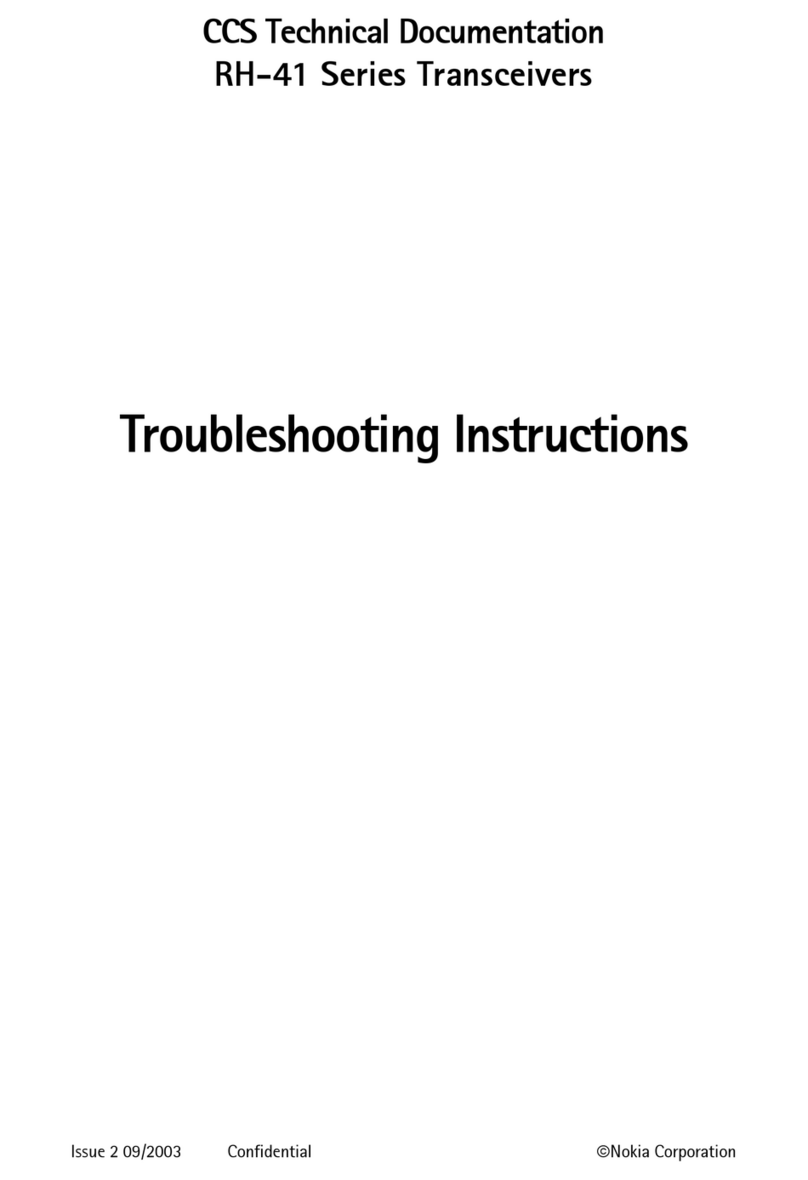
Nokia
Nokia RH-41 Series Troubleshooting instructions
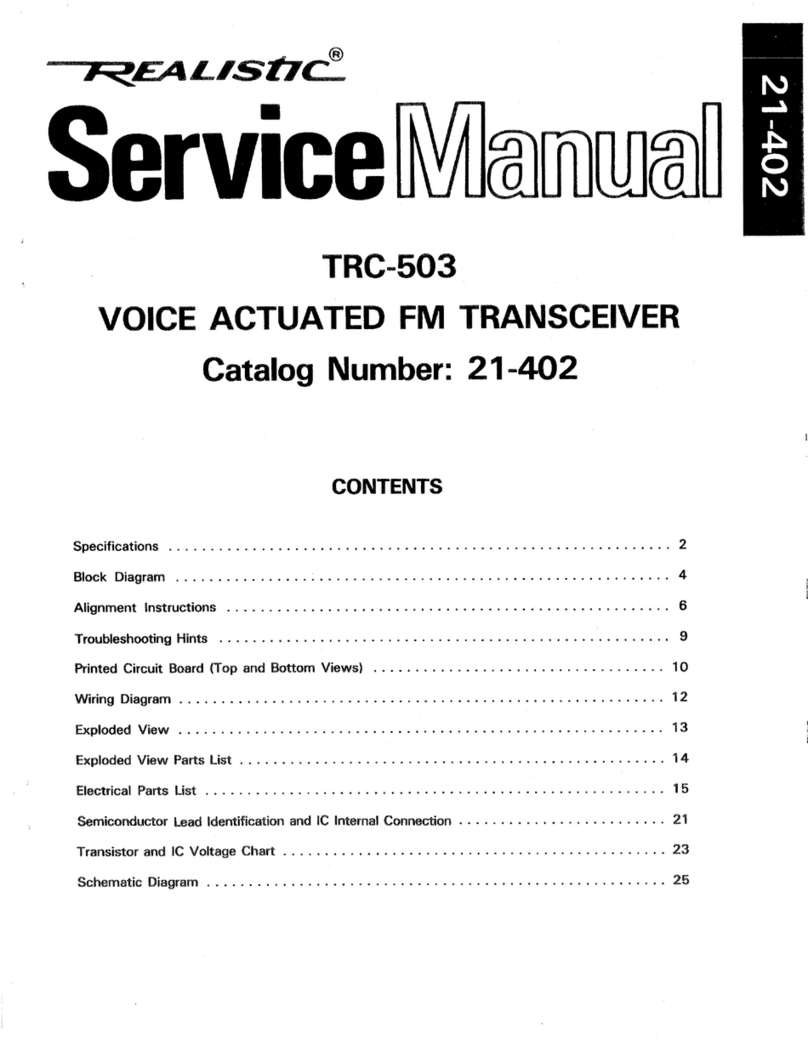
Realistic
Realistic TRC-503 Service manual
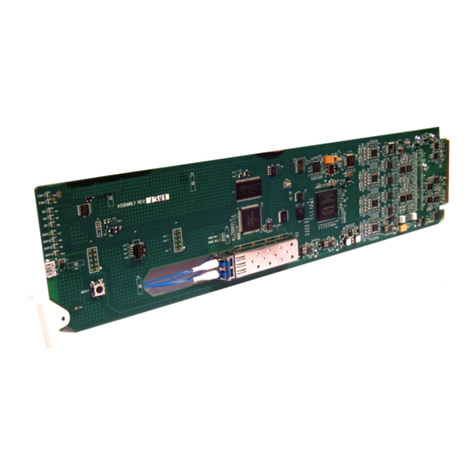
Cobalt Digital Inc
Cobalt Digital Inc 9433-EMDE-75/110 product manual
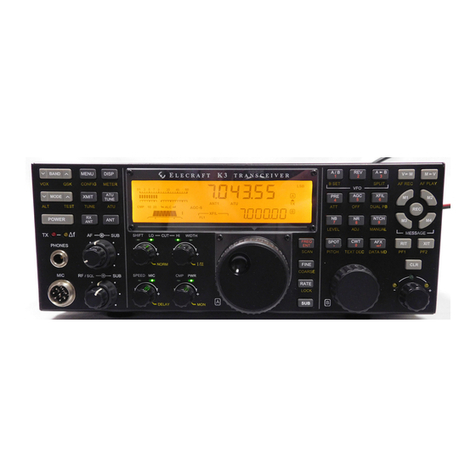
ELECRAFT
ELECRAFT KPA3 installation instructions
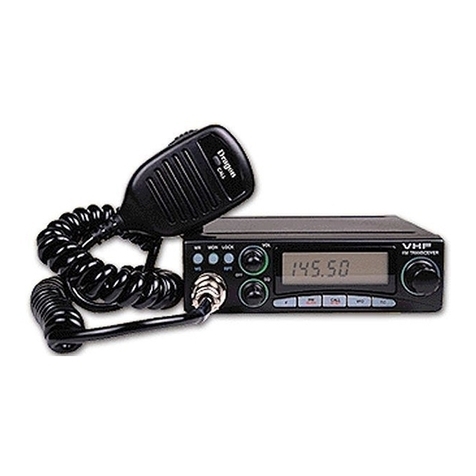
Albrecht
Albrecht AE 550 instruction manual

Vertex Standard
Vertex Standard VX-410 Series operating manual
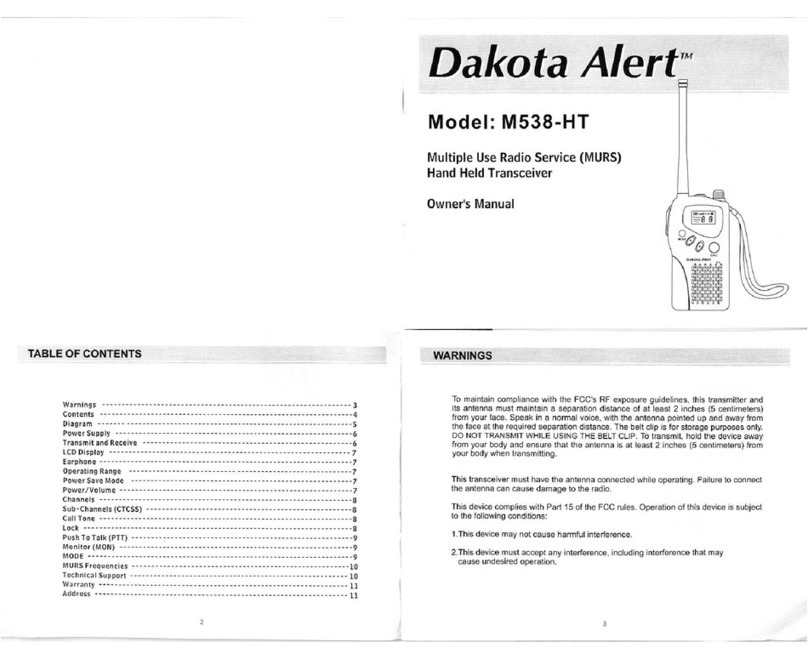
Dakota Alert
Dakota Alert M538-HT owner's manual
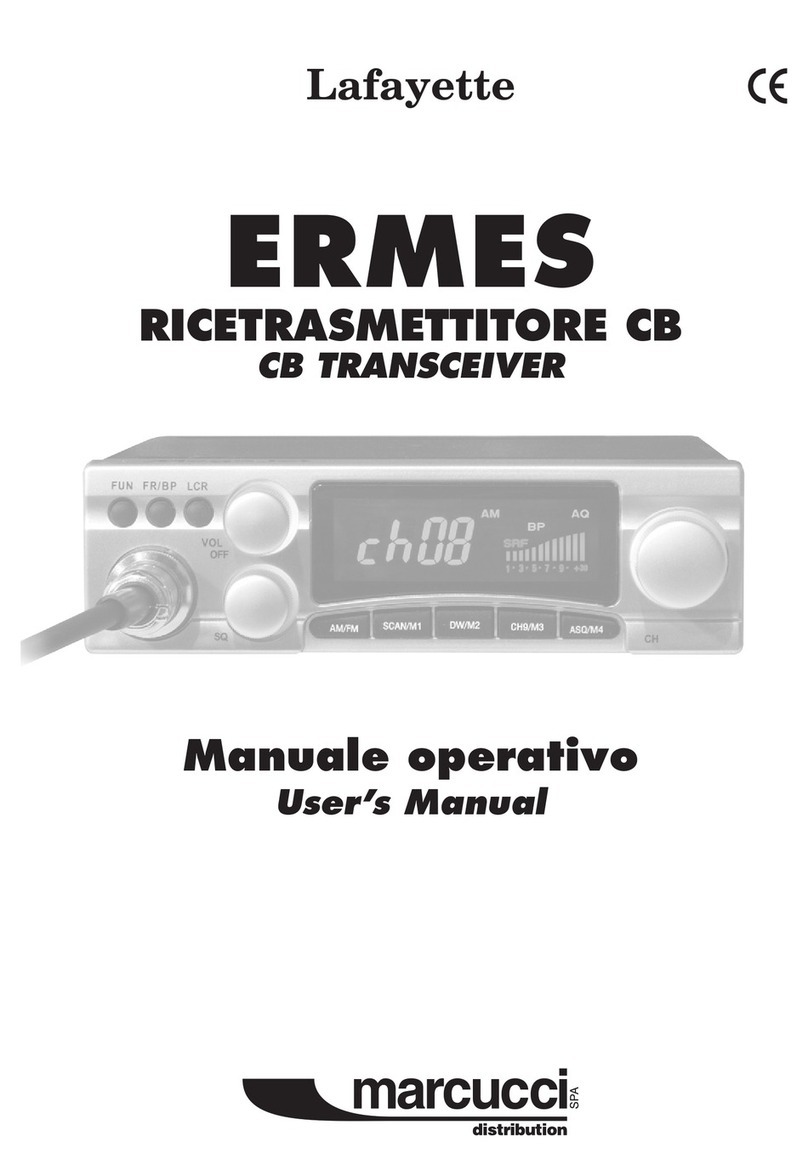
Lafayette
Lafayette ERMES user manual

Kenwood
Kenwood TK 3230 - FreeTalk XLS UHF instruction manual
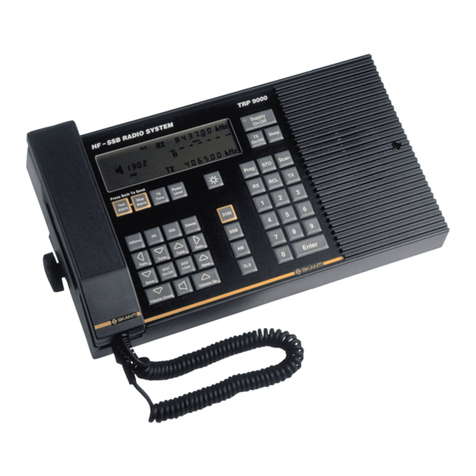
Skanti
Skanti TRP 9500 Technical manual
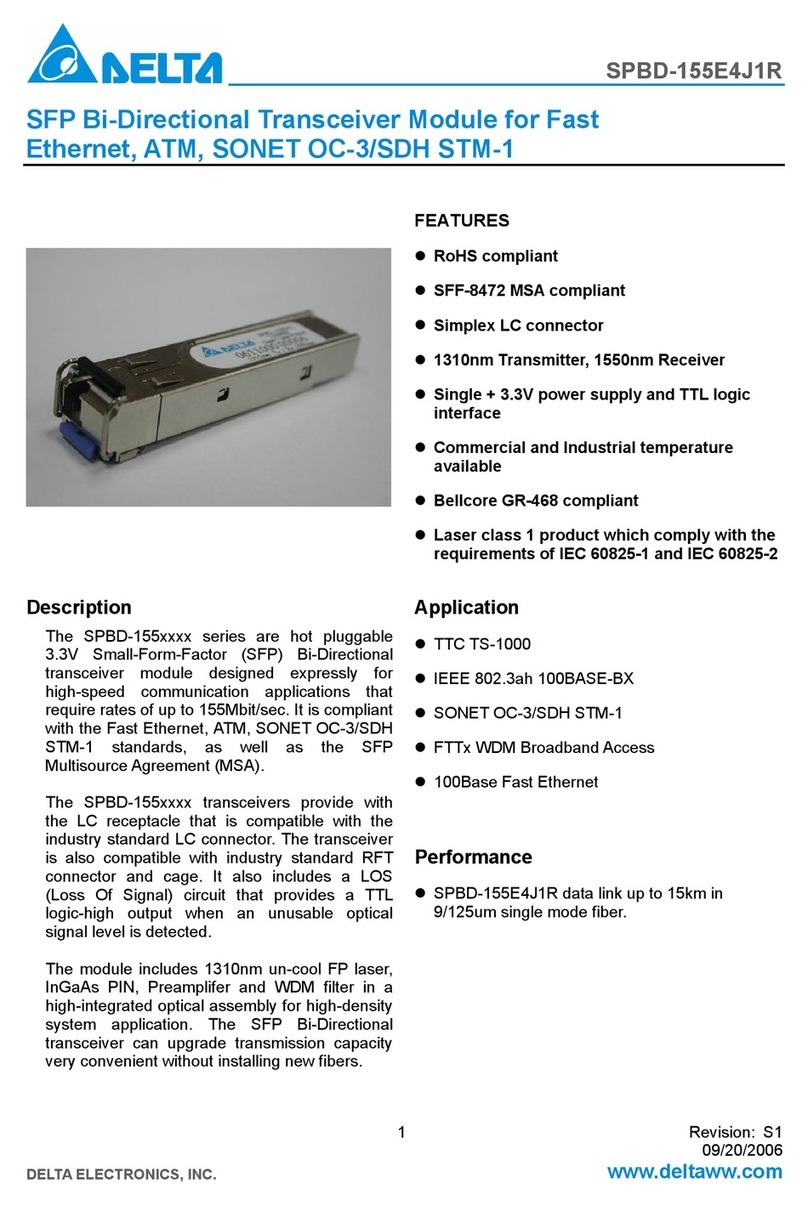
Delta Electronics
Delta Electronics SFP Bi-Directional Transceiver Module... Specification sheet
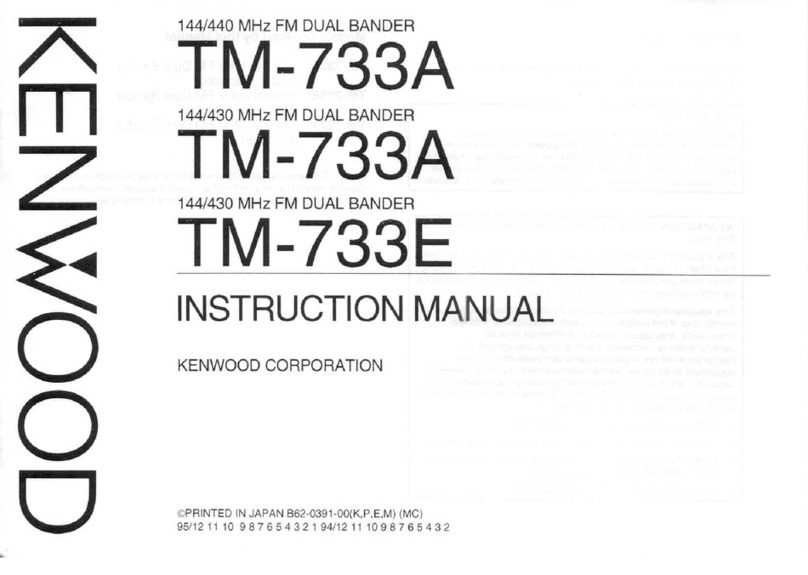
Kenwood
Kenwood TM-733A instruction manual
